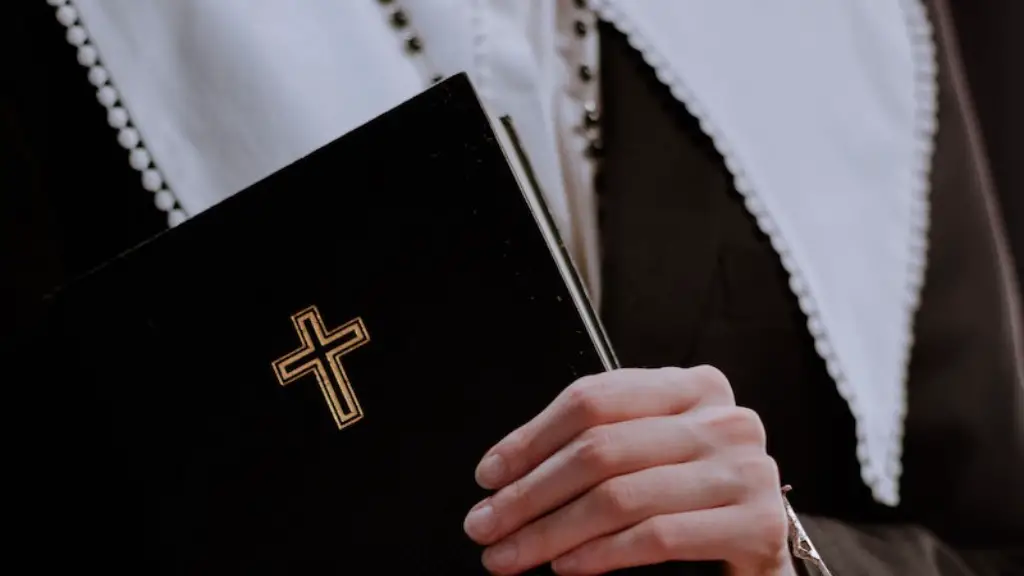The Bible is full of references to angels and even includes descriptions of their appearances. The most commonly referenced angels in the Bible are archangels and seraphim, and these are generally depicted as having human-like features including wings, halos, and burning eyes. Other angels are sometimes described in different ways depending on their purpose. Often in the Bible, angels are described as having bright, dazzling white robes and a sparkling aura that illuminates them.
Many experts agree that in the bible angels are given very physical, personal descriptions as opposed to the standard cultural notion of them being just higher spirits or spirits who lack physical forms. This physical portrayal frames angels as being so much more than just spiritual spiritual entities and puts them at the same level as humans. In the Bible, angels are given majestic and even glorious descriptions to display their importance and significance.
One example of an angelic description in the Bible is found in the book of Daniel. In this passage, the angel is described as having clothing that was, “woven with gold, like purest gold” and a face that “was like lightning, his eyes like flaming torches.” Here, we can see a physical description of the angel as well as his otherworldly characteristics. In addition, this description appears to evoke awe in the human observer as is evidenced by Daniel’s response which reads, “My face turned pale and I was so frightened that I fell on my face.”
In some cases, the Bible even offers detailed information about the color of an angel’s hair and eyes. In the book of Revelation, the angels are described as having hair that was “as white as snow” and eyes “like blazing fire.” These greater details are often used to emphasize the beauty of angels and to further fill the scriptures with descriptions of the divine.
Angelic Characteristics in The Bible
In the Bible, angels are often portrayed as having certain characteristics that make them stand out from humans. They are often described as being messengers of God, powerful protectors, and wise prophets. This is seen in the books of Matthew and Daniel, where angelic hosts appear and deliver a message from God or protect the characters from danger.
In some cases, angels are even given the power to control the elements, as can be seen in the story of the parting of the Red Sea in the book of Exodus. This power is used by the angel to create a path for the Israelites to escape Pharaoh’s armies and to reach the Promised Land. This story emphasizes the immense power and knowledge of angels, which is further highlighted by the fact that they are often described as having brilliant white wings.
Angels in the Bible also have human-like characteristics. They are often depicted as showing emotion, such as joy and sadness. This is evident in the book of Luke where angels appear to a group of shepherds and announce the birth of Jesus. The angels are described as rejoicing that Jesus has been born, showing that they have the capacity to feel joy.
Lesser Known Angels in The Bible
In addition to the archangels and seraphim, the Bible also mentions other lesser-known angels. One of these is the Cherubim, which are described as having four wings and four faces that can move in different directions. They are usually portrayed as having wings so large that they cover their bodies, giving them an all-encompassing and powerful presence. Of all the angels mentioned in the Bible, the Cherubim are perhaps the most mysterious, as their appearances and purpose are often left open to interpretation.
Another lesser-known angel in the Bible is the Thrones, which are often referred to as “the wheels” due to their circular design. They are described as having four wings that move in perfect harmony and are capable of traveling faster than light. These angels are often viewed as the most powerful of all the angels and have even been referred to as the “all-seeing eyes” by some Bible scholars.
The Bible also references one other type of angel called the Ophanim, which are described as a tier of angels above the Thrones. They are said to be servants of God who oversee the other angels and assist in the performance of miracles. They are usually depicted as being made of crystal or light and are often associated with the orbs of light seen in some visions and dreams.
Symbolic Meaning of Angels in The Bible
In addition to providing physical descriptions of angels, the Bible also offers a deeper symbolic meaning behind their depictions. The most often described angelic traits are seen as representing certain virtues and characteristics that are necessary for spiritual growth. For example, the white clothing of angels often symbolizes purity and innocence, while their wings oftentimes represent the power to transcend physical limitations.
Symbolic angelic characteristics are also used to reflect an individual’s path towards success. For example, eyes blazing like torches can represent focus and determination, while a halo and long hair may symbolize wisdom and spiritual guidance. Furthermore, the angelic imagery can be used as an encouragement for followers to strive for greatness and to never give up on their dreams.
Angelic Mission in The Bible
In the Bible, angels are often described as being the messengers of God who are sent to help guide, protect, and instruct people. This is seen in the Old Testament where angels appear to different people and give them words of wisdom, comfort, and direction. Also, in the New Testament, angels are sent to help Mary, Joseph, and Jesus as they travel to Bethlehem and later they are also sent to guard Jesus in the garden of Gethsemane.
In conclusion, the Bible offers an array of descriptions of angels that have both physical and symbolic relevance. Angels are described as having wings, halos, and burning eyes, among other features that help to emphasize their importance and power. In addition, their descriptions often carry symbolic meaning which can help readers obtain a deeper understanding of their messages. As such, the Bible’s descriptions of angels gives us a greater appreciation of their mission, power, and purpose.
Angelic Protection in The Bible
Throughout the Bible, angels are often depicted as providing protection to both people and holy places. In the Old Testament, angels are sent to protect the Garden of Eden, the Israelite people, and even the Temple of Solomon. This is evident in the story of Elijah and the angel who protects him when he is confronted by King Ahab. The angel is said to have remained with Elijah ever after and to have helped him fulfill his mission.
In the New Testament, angels remain a source of protection and solace. In the story of Jesus’ birth they are sent to protect Mary and Joseph, while in the story of Jesus’ death they offer comfort and assurance that all will be right in the end. In addition to protecting humans, angels are also described as providing protection to holy places, as seen when they are sent to protect the tomb of Jesus.
The Bible also describes angels as being powerful forces for good. They often appear as protectors and messengers of God and help us on our spiritual journeys. Angels serve as a reminder of our potential spiritual greatness and of the transformation that can take place when we open our hearts and minds to the divine.
Angelic Hierarchy in The Bible
The Bible is full of references to a hierarchy of angels. These angelic hierarchies are used to show that each angel has a specific role and task to fulfill and that they exist in a specific order. In The Bible, the most commonly accepted hierarchy includes seven archangels, four main Seraphim angels, and the lesser angels such as Thrones and Cherubim.
The seven archangels at the top of the hierarchy are believed to be appointed by God and have been given specific tasks. These archangels include Gabriel, Michael, Raphael, Uriel, Ariel, Sandalphon, and Jophiel. Each of these archangels has specific traits and abilities, such as wisdom, healing, knowledge and justice. The four main Seraphim angels are seen as guardians of the throne of God and are known for their fiery appearance and passionate loyalty to the Almighty.
The other lesser known angels, such as the Cherubim and Thrones, are usually believed to be created by God for specific duties. These duties can range from aiding humans in their everyday needs to protecting holy places. As such, these angels are usually seen as servants of God and fulfill the tasks given to them with perfect obedience.
Angelic Symbols in The Bible
Throughout the Bible, there are many references to certain symbols that are associated with angels. These symbols are used to help humans gain a better understanding of the angelic realm and the power behind it. One of the most well-known angelic symbols is the image of a white, flaming sword. This symbol is often seen as a reference to justice and divine power and is usually attributed to the archangel, Michael.
The image of two wings is another common angelic symbol. Wings are seen as representing freedom and power and often times this symbol is associated with the different ranks of angels, from the Seraphim to the least of the Throner. The presence of wings is also seen as a reminder of the angels’ power to transcend physical limitations and usher in new, spiritual understandings.
Other symbols commonly associated with angels include halos, rainbows, and shining stars. Halos are often used to symbolize holiness and purity, while rainbows are seen as a sign of divine promise and hope. Similarly, the star symbol is often used to reference the divine guidance and light that angels are said to bring to their worshippers.





